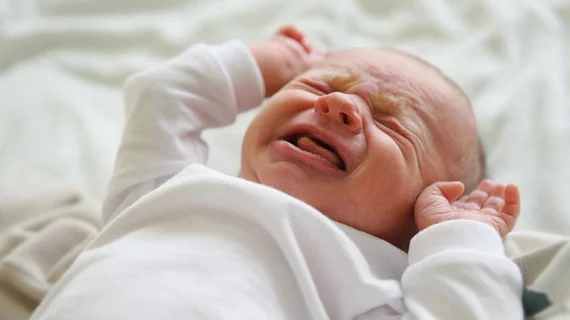The National Institutes of Health (NIH) has invited imaging experts from Children's National Hospital to help investigate opioids’ long-term impact on developing infant brains.
The District of Columbia-based provider joins several other institutions as part of the NIH’s massive Helping to End Addiction Long-Term Initiative. Under the multi-million-dollar study, researchers will enroll pregnant women from parts of the country hit hardest by the opioid epidemic.
Children’s will act as the MRI coordinating center during the four-year outcomes of babies with opioid exposure study, the institution said Friday, Oct. 11. As part of the effort, imaging experts will use sophisticated, quantitative MRI analyses, which analyze the micro-structure of the mind, to evaluate babies who were exposed to opioids in the womb.
"The power here is we will be able to perform serial measures so we can understand how the brain is maturing over the first two critical years of life," Catherine Limperopoulos, director of MRI Research of the Developing Brain, said in a statement. "I anticipate we will be able to identify important, early biomarkers in those infants who will go on to experience neurological or behavioral dysfunction later in life."
Those involved will enroll pregnant women at four clinical sites including Case Western University, Children’s Hospital of Pennsylvania, Cincinnati Children’s and the University of Alabama at Birmingham. They’ll closely follow kids during their first two years of life, with brain images captured during the first month, at half a year and the two-year mark. Normal babies will also be tracked during the study period to compare their development to those suffering from neonatal abstinence syndrome (NAS).
Limperopoulos said she hopes to determine the precise time when brain development for babies exposed to opioids veers off course. This could help clinicians to intervene earlier in life to hopefully correct that course.
"Ultimately, our goal is to improve care for opioid-exposed infants to reduce the chance they will suffer lifelong neurological injuries, and the knowledge we build through this project has the potential to help other vulnerable infants,” she added.
NAS has been a growing concern across the U.S. The syndrome affected less than 3,000 babies in the year 2000, but that number skyrocketed to nearly 22,000 in 2012 as the epidemic worsened. These babies are costly and difficult to care for, and exposure to opioids can lead to developmental delay or impaired communication in early childhood, one study noted.

